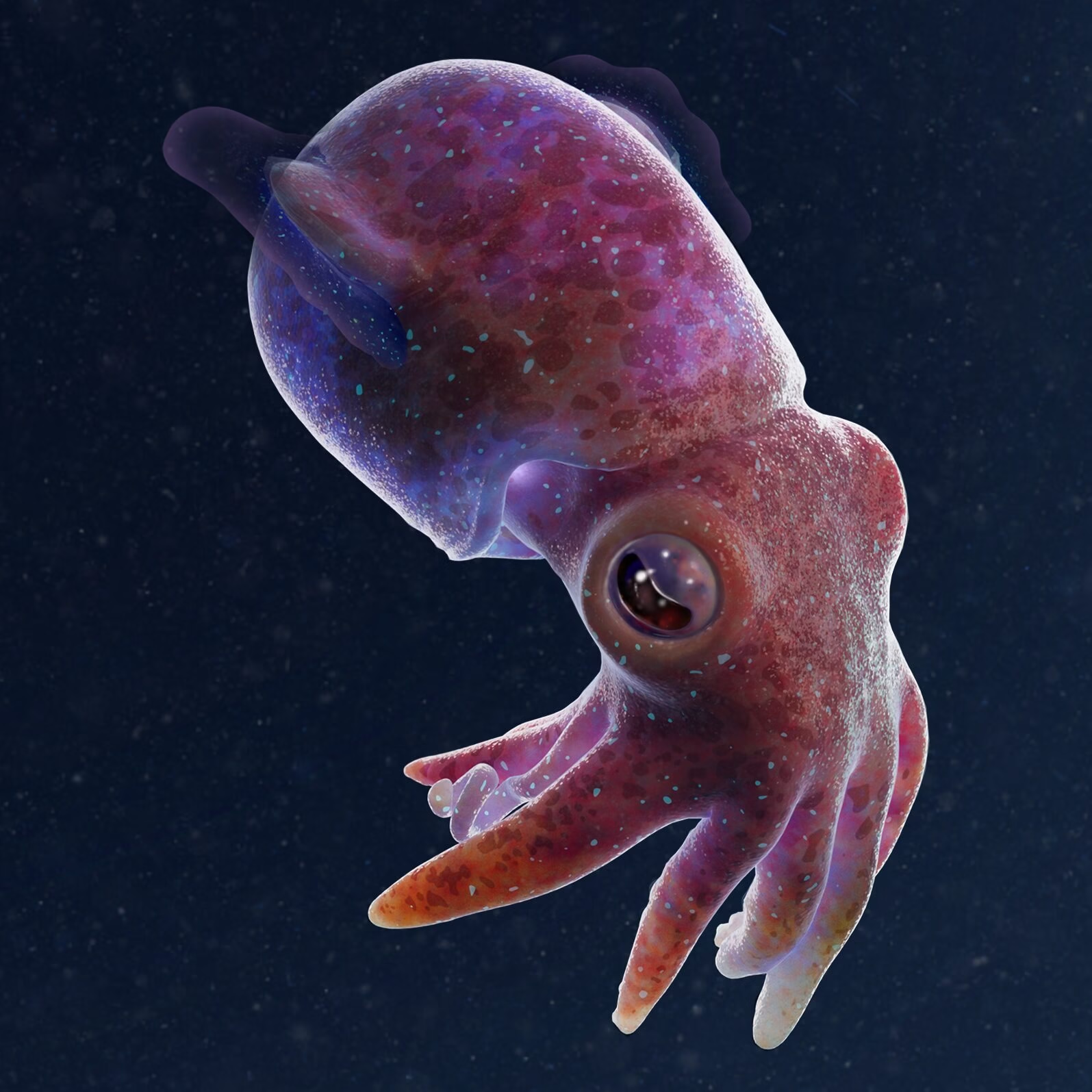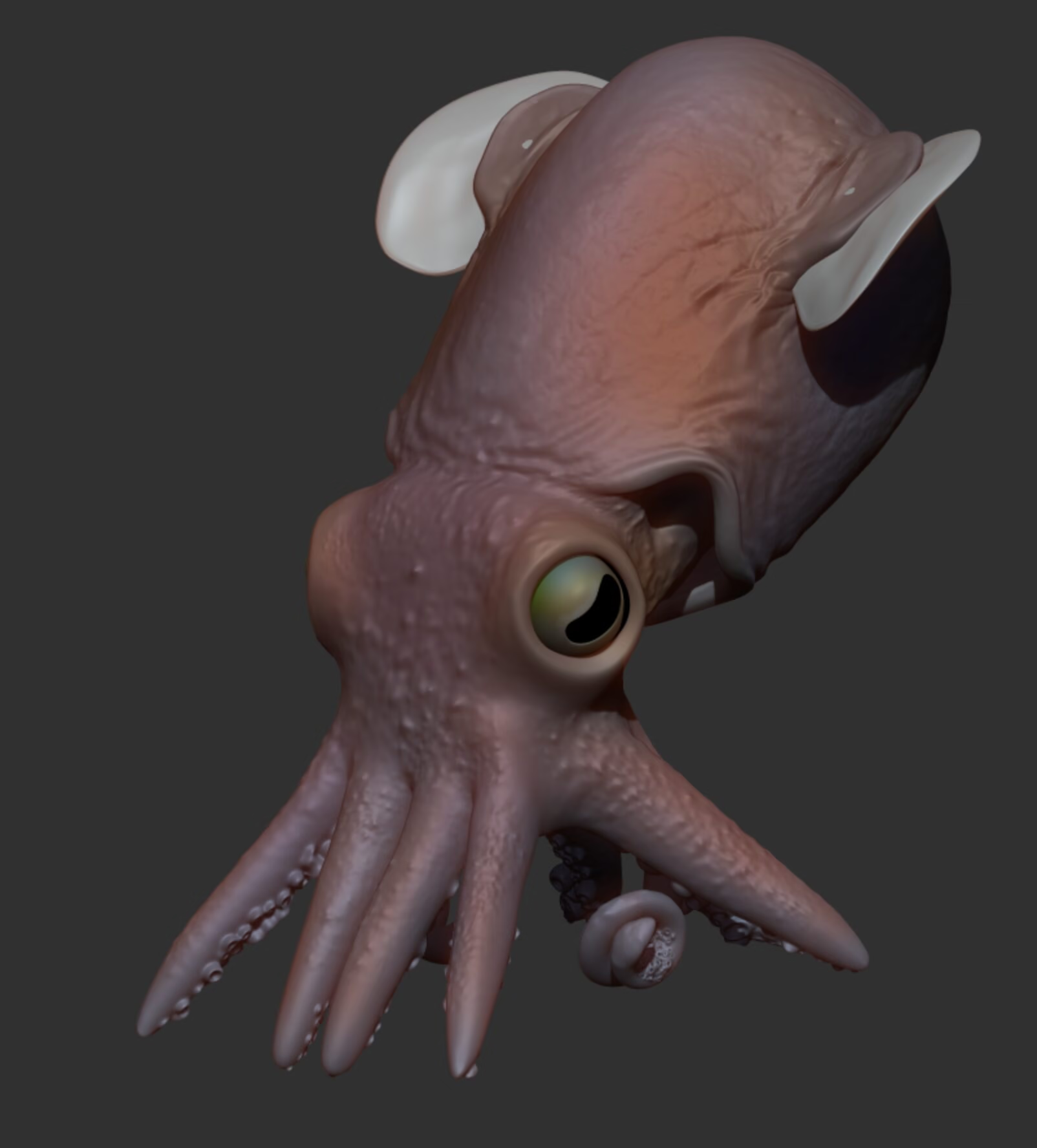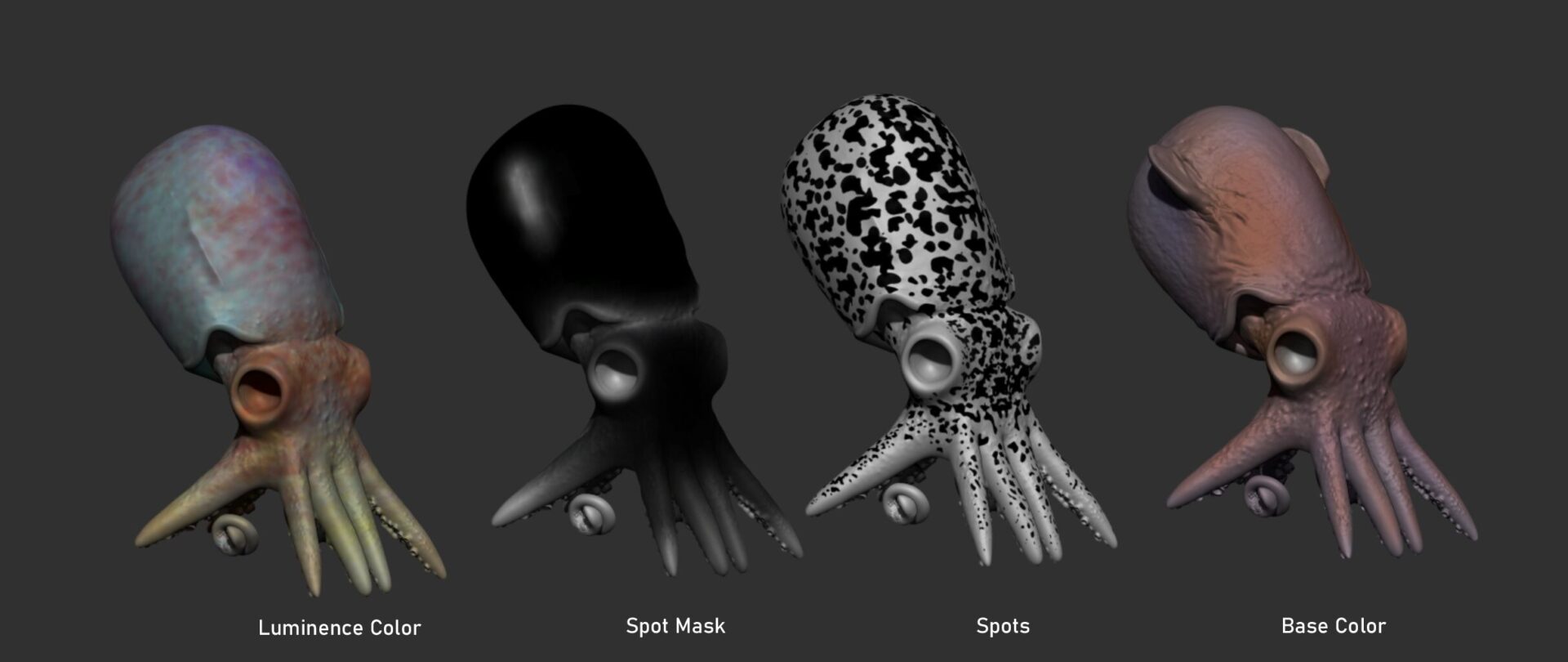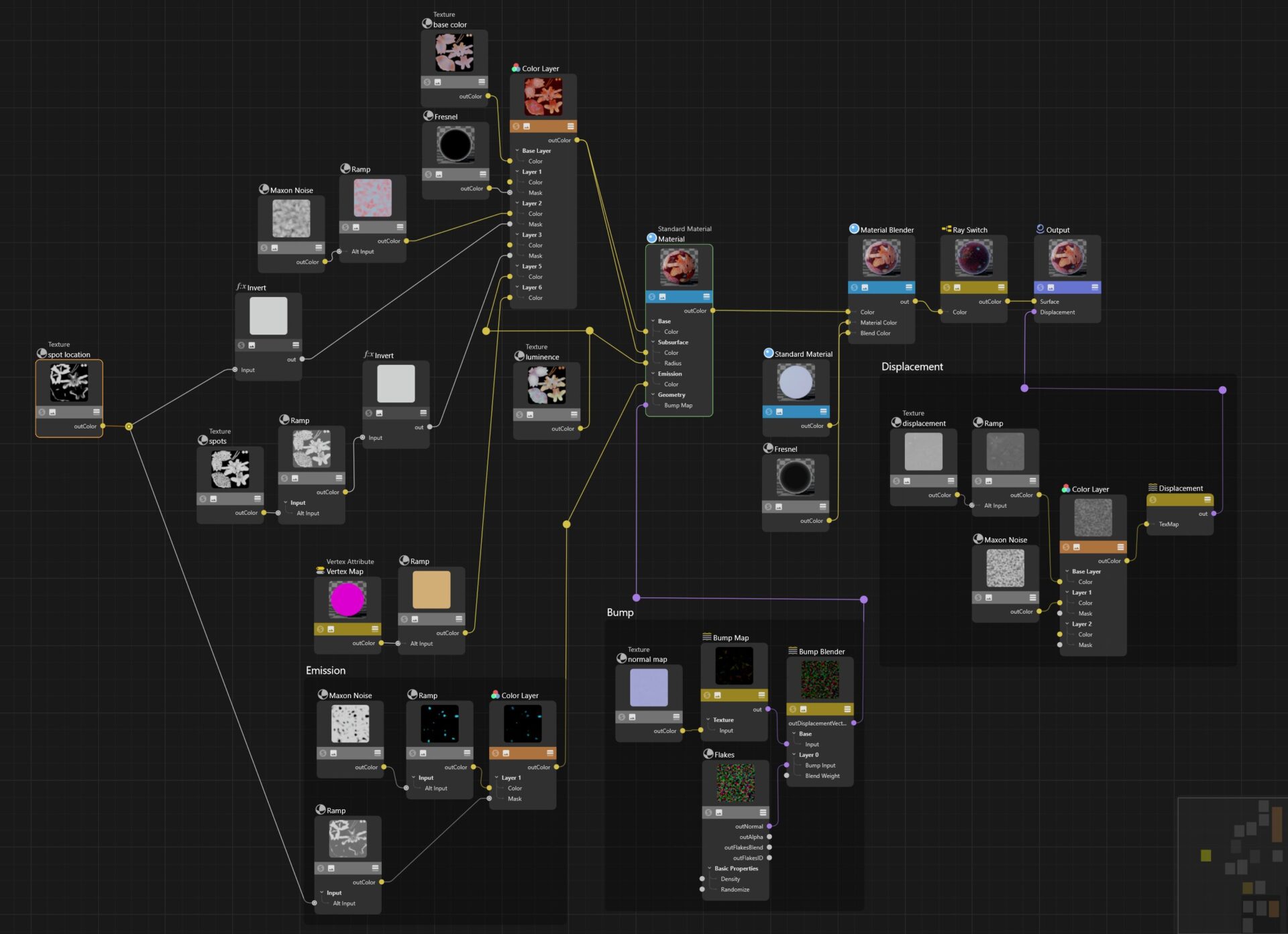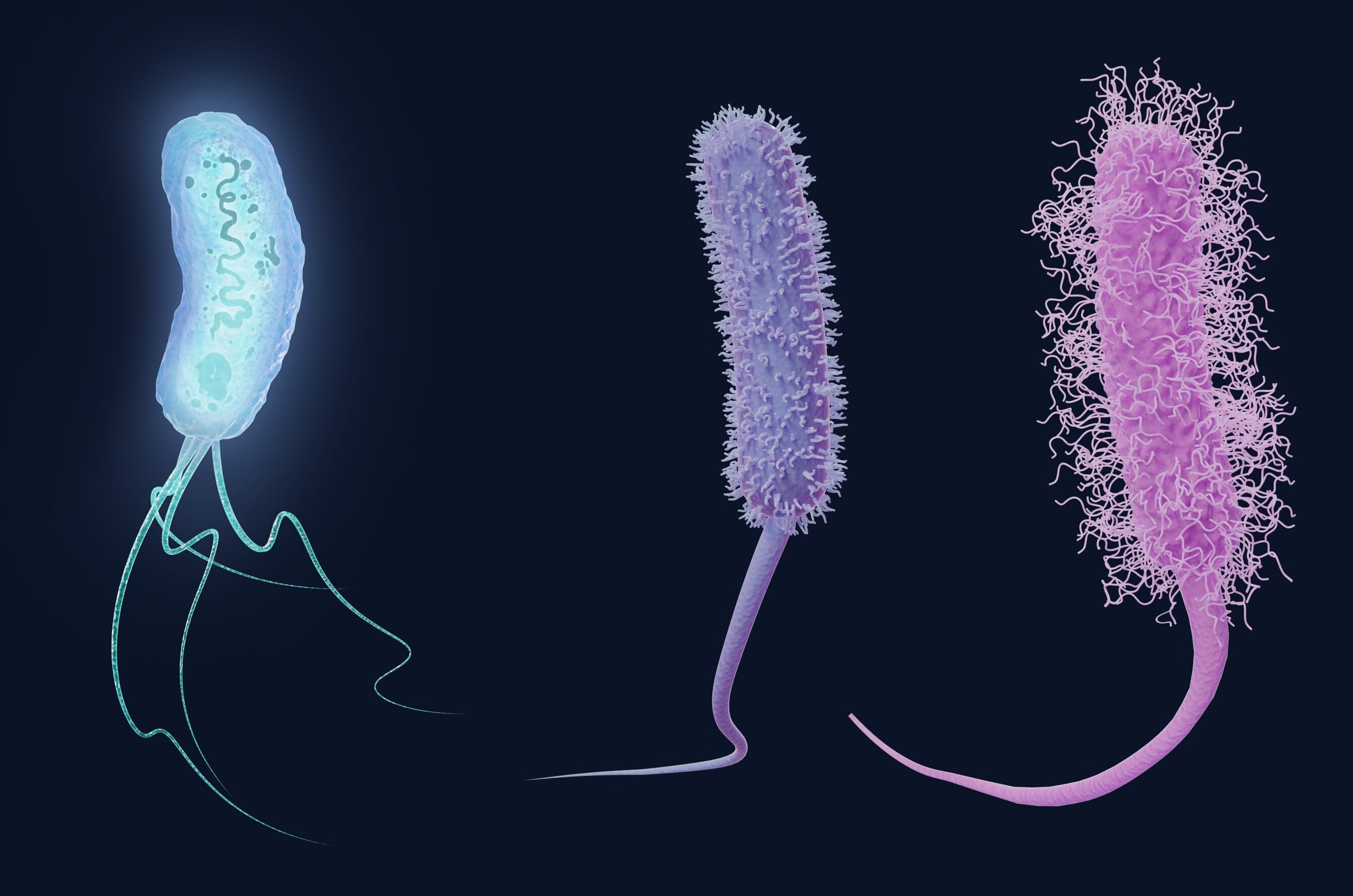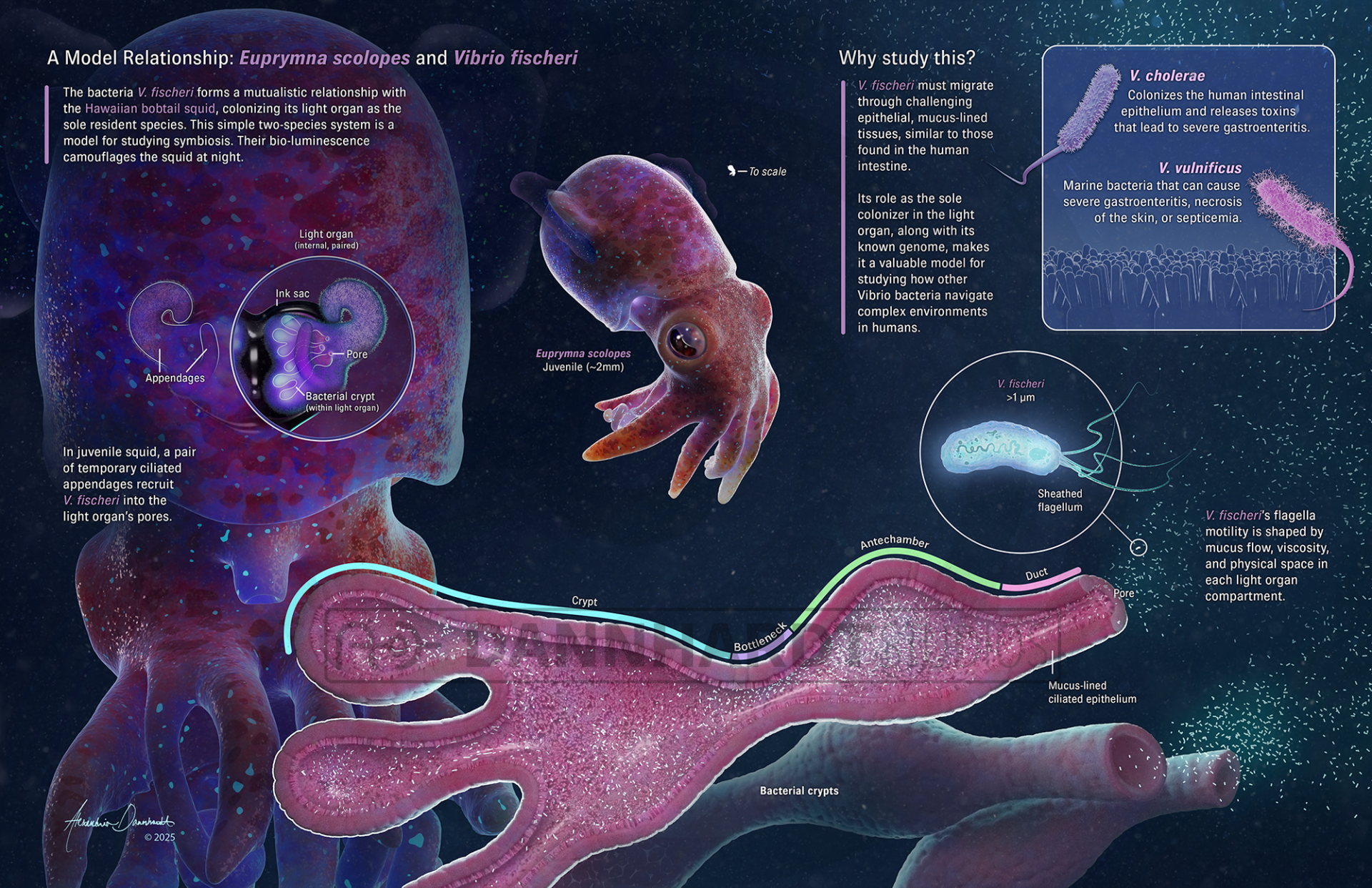A Model Relationship: V. fischeri
Year
2025
Content Expert
Jonathan B. Lynch, PhD
Media
Cinema 4D, Redshift, Adobe Photoshop
Description
This two-page illustration explores the fascinating symbiotic relationship between the Hawaiian bobtail squid and the bioluminescent bacterium Vibrio fischeri. The first page introduces the basics of their partnership, while the second focuses on the broader significance of studying V. fischeri itself.
Their relationship is full of delightful biology. There’s so much depth in their relationship, I could make a whole series of illustrations on the topic.
I created this poster after learning that Dr. Lynch’s lab, which studies this bacteria, has had difficulty attracting new Ph.D. candidates to the project. He believes this is partly because people don’t realize how important and unique this system is. I wanted to make something eye-catching and accessible that could spark curiosity, communicate the science, and maybe even help recruit future researchers.
The Challenge
For this poster, I set out to accomplish two things: 1) Tell a complex story and to clearly communicate the fascinating symbiosis between the squid and its bacterial partner, and to convey the biological significance of their relationship; and 2) Engage the viewer by creating an eye-catching illustration that draws people into the science and invites them to learn more.
To make the piece visually compelling, I focused on achieving detailed rendering style.
Close-up of the squid.
Modelling the Squid
The squid and its anatomy were modeled in ZBrush. While the squid was UV-mapped, UVs were used sparingly (mostly for a few base color maps and masks brought into Redshift). The majority of the texturing was driven through Redshift’s node network, allowing for a more flexible and procedural approach.
To achieve more organic textures with less manual work in ZBrush, I combined these textures with vertex maps in Cinema4D. I enjoy blending the controlled, soft painting style of ZBrush with the random, natural noise generated in Maxon tools. This combination creates textures that feel more lifelike and less artificial.
To keep the squid model lightweight and optimized, I exported displacement and normal maps from ZBrush, preserving surface detail without increasing geometry.
One key element of the look was subsurface scattering, essential for mimicking the squid’s natural bioluminescence. A custom luminance map controlled the scattering radius color (essentially the hue that glows through the squid when backlit). I emphasized this subtle glow and translucency to suggest the squid’s bioluminescent qualities, helping it feel alive on the poster.
Animating
The squid was modeled in a default, symmetrical position, so I rigged his tentacles in C4D so I could pose him for the poster. Because of this, I could make him move a little bit!
Animation of squid.
Bacteria
The bacteria were made in Cinema4D with primitives, hair, and spline flagellum. The other bacteria were not used in the final design.
The Layout
The biggest challenge in this project was the layout and narrative flow. I went through many iterations trying to balance background information, which can be hard to grasp given how foreign these two species are, with the “aha!” moment of why this relationship matters.
It was also difficult to reign myself in. I’m passionate about natural science and could easily have gone on at length about the fascinating dynamics between the squid and its symbiotic bacteria!
Early on, I leaned toward highlighting the bacteria’s connection to human health, but I realized that this added too much complexity and risked overwhelming the viewer with unrelated information. Instead, I now simply hint at the broader relevance in the title section, and focus the main content on telling the squid’s story.
This allows the poster to serve as a more effective tool for the PI – something they can use to introduce the background and spark interest before diving deeper into the specific aspects of the research. It now highlights what the PI is currently researching, rather than trying to cover every possible angle of why the topic matters.
Previously poster layout


